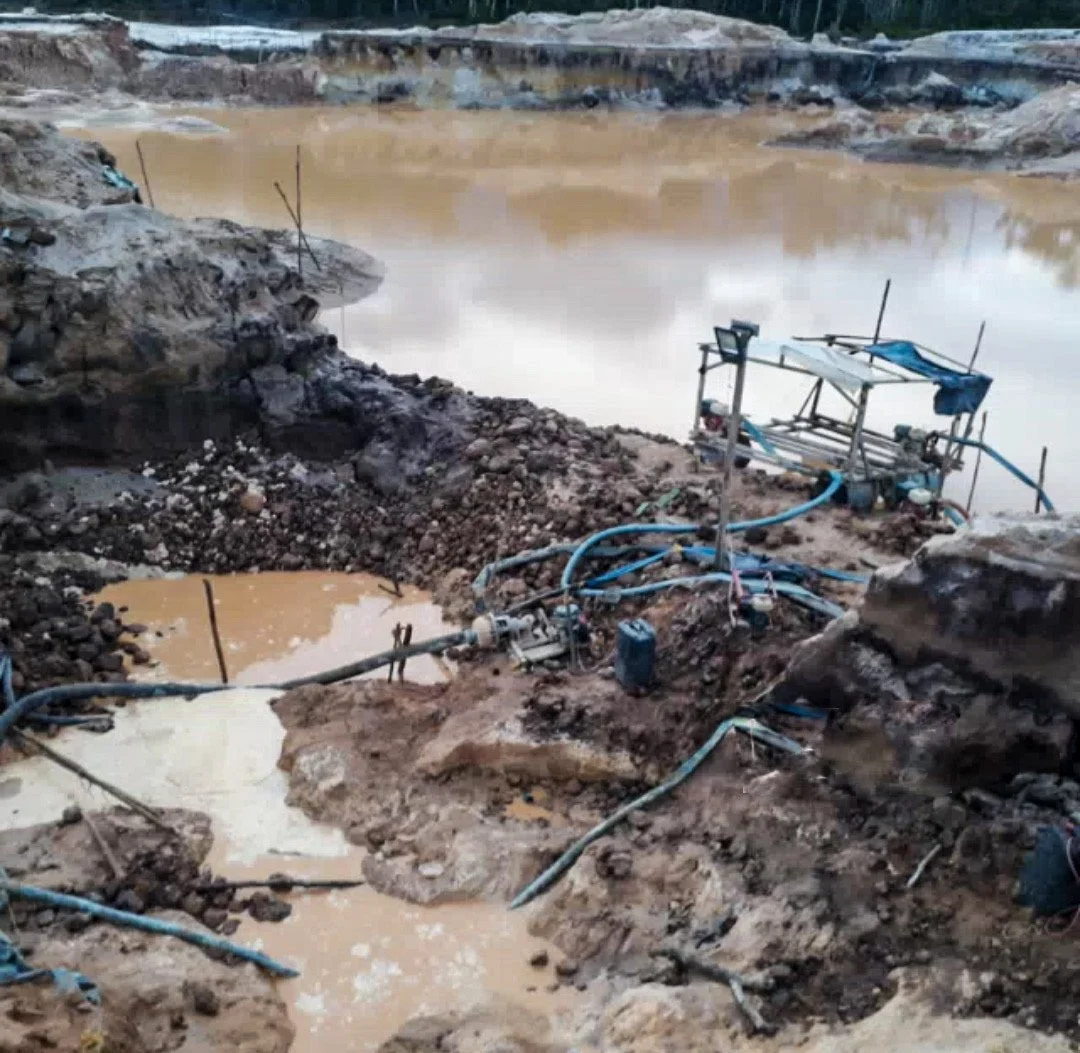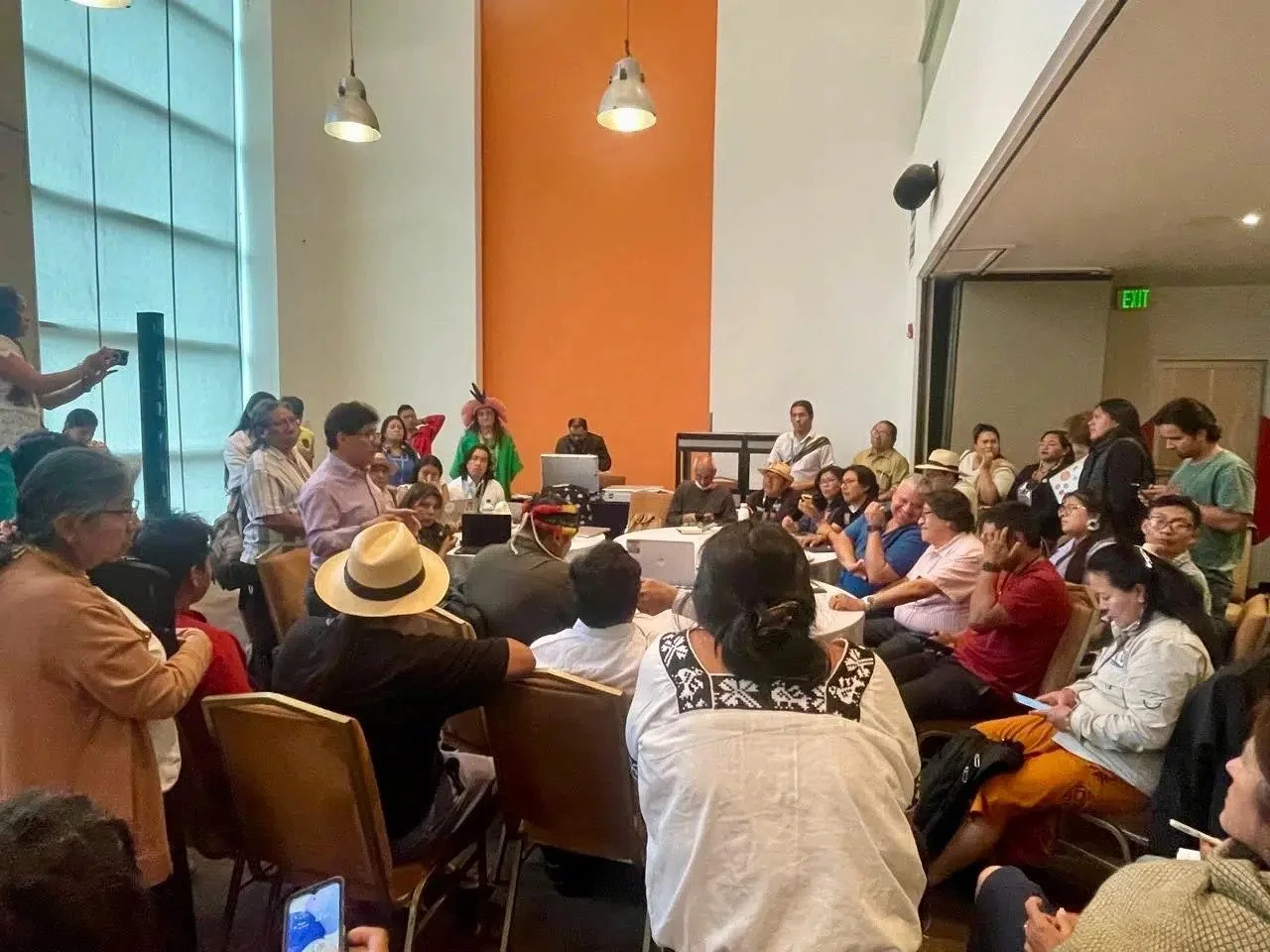Global Indigenous Peoples News Bulletin #10 (November 2025)
This bulletin devoted to Global Indigenous Peoples News, part of the Glocal Exchange project of Weave News, seeks to highlight some of the current issues from Indigenous communities in different parts of the world. The focus of the bulletin is aligned with the overall purpose of the Glocal Exchange project, which examines globalization through its impact from the perspective of local communities. It also supports the Weave News mission to “investigate and report about contemporary issues that are either underreported by establishment and other corporate media or reported in a way that excludes essential context, perspectives, and voices.” These are “issues that have a strong justice component and that reveal connections across communities, borders, struggles, and experiences.”
Indigenous people at the COP30 climate summit in Belem, Brazil
At the COP30 UN climate talks in Belem, Brazil, Indigenous groups have been “seizing the chance” to make their demands and aspirations visible. The Associated Press reports that Munduruku Indigenous leaders expressed their demands for Brazil, which included “revoking plans for commercial development of rivers, canceling a grain railway project that has raised fears of deforestation and clearer demarcations of Indigenous territories. They also want a rejection of deforestation carbon credits.” Other Indigenous leaders from the Ecuadorian Amazon “warned that oil drilling, mining and agribusiness expansion are pushing the rainforest closer to an irreversible tipping point.”
One of Indigenous leaders participating in the COP30 summit is Raoni Metuktire. He is urging Brazil to empower native peoples to preserve the Amazon rainforest and has warned that plans to build infrastructure in the region are a direct threat to the forest and its people. He also “warned that proposed highways, rail projects and oil wells would harm people across the world.”
A scene from the "Acesso à justiça e povos indígenas" panel at the COP30 summit in Brazil. (Photo: DPU - Defensoria Pública da União from Brasília, Brasil, CC0, via Wikimedia Commons)
Brazil’s minister for Indigenous peoples Sonia Guajajara acknowledged that “[c]ountries must recognize the demarcation of Indigenous lands as a key component of tackling the climate crisis, and civil society must help in the defense of such lands against mining interests.” She warned that “countries must maintain the rights of Indigenous people, while mining interests seek to exploit the ‘critical minerals’ necessary to manufacture the renewable energy and other low-carbon equipment needed to solve the climate crisis.”
The Nepali Times’ Durga Rana Magar reports that at this year’s summit, “the most climate-vulnerable countries are demanding that the Loss and Damage Fund be expanded to $1.3 trillion. At the same time, Indigenous people are demanding proportionate access to climate financing, urging authorities to ensure that climate action funds reach the people most impacted by the climate crisis.”
Responding to extractive industries
In a recent report for Mongabay, Catherine Ellis writes that mining for gold in Venezuela has threatened traditional food sources and disrupted ecosystems. Indigenous communities, like Pemón, have been forced into mining for gold as their traditional way of life has been disturbed and they lack other economic opportunities.
Machinery used to extract gold in Canaima National Park. (Photo: SOS Orinoco via Mongabay.)
As Weave News has previously reported, extractive practices also drive the “green economy,” and the implementation of the energy transition often takes place at the expense of biodiversity and communities. From the lithium-rich salt flats of the Andes to the nickel mines of Indonesia, Indigenous women stand at the frontlines of the energy transition as defenders of their lands and waters.
Weavers of Life (Tejedores de Vida)
Weave News recently launched a new series of articles in which author Johana Fernanda Sánchez Jaramillo introduces us to people and groups who defend beings other than humans. In her first profile, Sánchez takes us to Katsa Su, which in Awápit means “House” for the Awá, a place where all living beings are people.
As the global race for rare earth metals increases, industries and policymakers in the European Union and Sweden have been showing interest in the mineral-rich lands of northern Sweden. Emil Siekkinen, writing for The Revelator, notes that there is a high risk that this industrial expansion will harm the Indigenous Sámi population and the ecosystems the Sámi depend on. “But there could be a more sustainable and just alternative — urban mining (or circular mining),” writes Siekkinen. “Recycling metals from existing products and waste can help meet strategic needs without sacrificing the environment or Indigenous rights.”
Legislative wins for Indigenous peoples
On October 30, 2025, the Australian state of Victoria passed landmark legislation to establish the nation’s first treaty with First Nations people. According to Human Rights Watch, “The Statewide Treaty Bill sets up a democratically elected body to represent First Nations people in Victoria and advise the state government on laws and policies impacting their rights and interests.” Victoria’s treaty is the first of its kind in Australia. Unlike other Commonwealth countries, Australia has never entered into treaties with Indigenous people. But while the treaty is a significant step toward upholding the right to self-determination in Victoria, HRW argues that “it needs to jump-start efforts at the national level to right historical and ongoing wrongs against First Nations people throughout the country.”
Meanwhile, in an unprecedented court decision, “the Peruvian judiciary has declared that the State’s failure to approve and implement a national public policy for the titling of native communities’ territories is an ‘unconstitutional state of affairs’.” According to a report from the Instituto de Defensa Legal and republished in English by Forest Peoples Programme, “This is the first ruling of its kind and represents a crucial step in defending of territorial rights in Peru. By declaring the State’s inaction unconstitutional, the Judiciary acknowledges a historical debt, but also amplifies the voice of Indigenous organizations that have been fighting for decades to protect their territories.”
The first session of the Subsidiary Body on Article 8(j) marks a milestone in global environmental governance. (Photo: Noticias Ambientales)
In Panama, officials recently initiated the first regional meeting of Indigenous peoples for inclusion, biodiversity, and environmental justice. “Panama is hosting the first session of the Subsidiary Body on Article 8(j) of the Convention on Biological Diversity (CBD), a new permanent space created at COP16 to ensure the full and effective participation of Indigenous peoples and local communities in the protection of biodiversity,” reports Noticias Ambientales. “This represents a historic advancement in the democratization of environmental governance, recognizing that the protection of biodiversity requires solutions based on nature and the wisdom of those who have coexisted with it for millennia.”
Indigenous peoples and media
In an article for Intercontinental Cry, John Ahni Schertow discusses a new report by Survival International warning that social media influencers and online content creators are a dangerous new threat to some of the world’s most isolated Indigenous peoples. “While illegal logging, mining, drug trafficking, and missionary work are the biggest threats to uncontacted peoples,” writes Schertow, “the rise of social media represents a new form of exploitation that transforms human vulnerability into spectacle.” As measures to counteract this new threat, Survival is urging governments to take action and asking social media platforms (such as YouTube, TikTok, and Instagram) to remove content filmed in the prohibited Indigenous territories and to set up clear policies against monetizing this kind of material.
In Bolivia, young Indigenous people are using journalism to reclaim their voices and identity. In the Knight Center’s Latin American Journalism Review, César López Linares spotlights the Indigenous Journalism School (EPI), which was founded with funding from international organizations,in October 2020 as an initiative of Oré, an organization that supports Indigenous autonomies in Bolivia. These autonomies are a self-governing model recognized by the Bolivian Constitution that allows Indigenous peoples to manage their territories, institutions and norms according to their own traditions and forms of organization. According to López Linares, the EPI has developed several media outlets and information platforms that have positively impacted the Indigenous communities they serve.
Ñande Ñee is a digital radio project managed by EPI students whose name means “Our Voices” in Guaraní. (Photo: Ñande Ñee on Facebook via LatAm Journalism Review)
Global Voices provides a similar story from Chiapas, Mexico, where collaborations between community organizations and tech-trained youth represent resistance to systemic inequalities, demonstrating that cultural preservation and progress are not mutually exclusive. Through youth leadership and digital activism, “girls trained in coding are creating websites for women’s rights collectives, running social media campaigns against domestic violence, and analyzing femicide data to support grassroots advocacy.”






